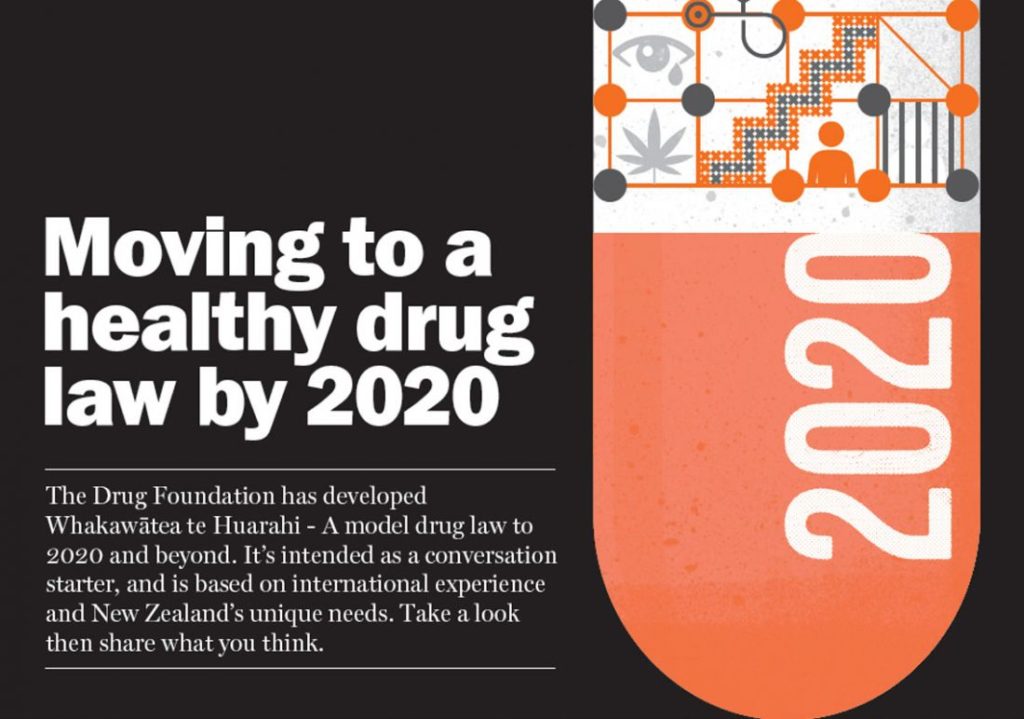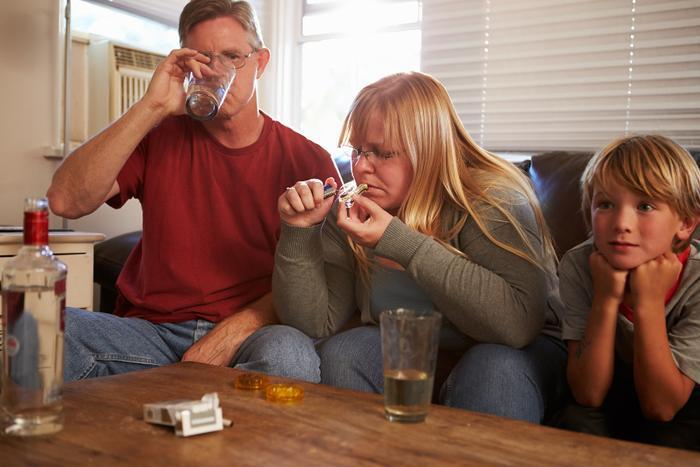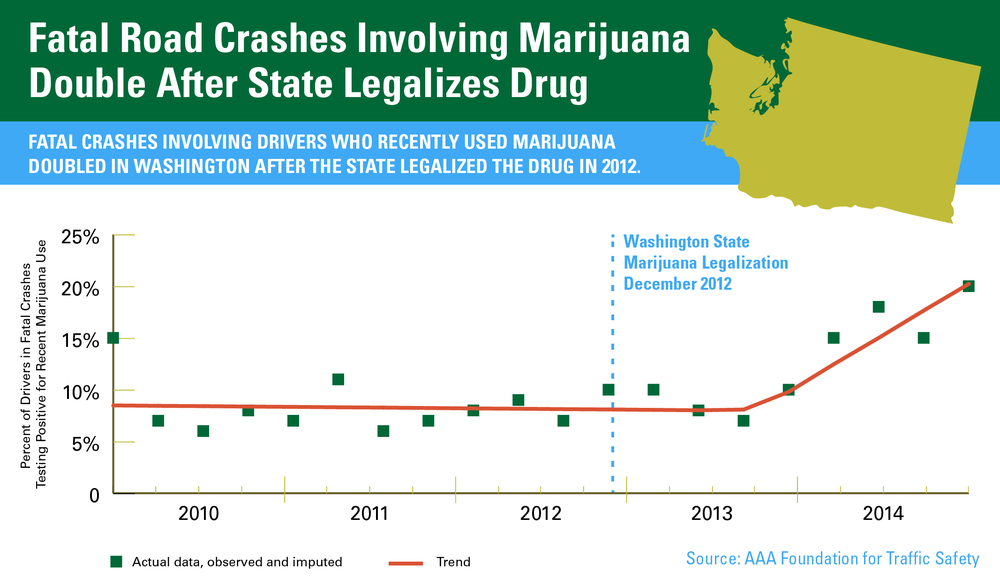Drug Foundation’s ‘Taking Control’ Model For Legal Weed Is ‘Out Of Control’
 The Drug Foundation has recently released a model for regulation entitled “Taking control of cannabis – a model for responsible regulation“.
The Drug Foundation has recently released a model for regulation entitled “Taking control of cannabis – a model for responsible regulation“.
If anything, the model is out of control. Here’s some key problems:
1. It will be legal to grow cannabis for personal use
The Drug Foundation wants to allow ‘small-scale growers‘ to allow for ‘community development‘ (!!) and to ‘redress the harm caused by prohibition‘. They also want to ‘allow people to grow plants at home as proposed, and share with friends.‘ Yeah – let’s get the whole neighbourhood high!
The problem with private homes being used as ‘grows’ is that dope dealers will simply stay under the radar with multi-location grows, and children will be exposed to the industry – right in their backyard.
Home grows are simply a form of black market. They avoid any regulation. Who is going to monitor what a local drug dealer is growing in their backyards?
The Drug Foundation makes a shocking and insulting assertion about our Police, saying that ‘a key goal should be to prevent cannabis offences being used as ‘convenience charges’ to target vulnerable populations.’ Apparently the aim of the Police is simply to find any excuse they can to charge ‘vulnerable populations‘.
2. No age restriction on use
 While the Drug Foundation agrees with a legal purchase age of 20, they ‘caution around setting a legal use age as this could result in further penalising vulnerable communities with negligible impact on use.’ They argue that teenagers can then take advantage of ‘allowing them access to products that carry health warnings and potency controls‘.
While the Drug Foundation agrees with a legal purchase age of 20, they ‘caution around setting a legal use age as this could result in further penalising vulnerable communities with negligible impact on use.’ They argue that teenagers can then take advantage of ‘allowing them access to products that carry health warnings and potency controls‘.
Apparently, a 12, 13 or 14 year old (or even younger) using drugs is not the issue. It’s whether they have good product, and don’t get penalised.
So in effect it will be totally legal for a 12 year old to be carrying and smoking / consuming cannabis – as long as they persuaded a 20 year old ‘big brother’ to buy it for them. They argue that it’s to help vulnerable communities, but increasing access will simply add to the vulnerability and harm.
3. Online sales
 The Drug Foundation wants to increase the availability of drugs by allowing ‘online sales through a single website‘ and to ‘ensure strict requirements for age checking at point of purchase and delivery.’ This is both flawed – and naive.
The Drug Foundation wants to increase the availability of drugs by allowing ‘online sales through a single website‘ and to ‘ensure strict requirements for age checking at point of purchase and delivery.’ This is both flawed – and naive.
Online age checking has proved generally to be a farce and very difficult to monitor. And once again, the cost of providing this level of regulation and enforcement will be very costly – yet they want the online sales to be ‘non-profit‘. But hang on – isn’t the taxes on cannabis going to pay for all the new schools, hospitals, roads, and every other great cause we can think of?
They then argue that ‘it could be run similarly to TradeMe, with licensed retailers able to offer products in a controlled way‘. Apparently nobody is on TradeMe for the purposes of making a quick buck with dodgy products. They also argue that ‘small-scale growers who are currently operating illegally‘ (like the gangs and your local drug dealers standing outside schools) ‘to become part of the mainstream economy‘.
4. SmokeFree – but a joint, edible or dab in the home is fine
 In an incredible display of confused thinking, they want to ‘avoid the proliferation of other licensed premises such as cannabis cafés, as these may encourage and normalise cannabis use‘.
In an incredible display of confused thinking, they want to ‘avoid the proliferation of other licensed premises such as cannabis cafés, as these may encourage and normalise cannabis use‘.
Yet in the same policy, they want to ‘allow for the consumption of cannabis in homes‘. The reason? ‘Otherwise people will break the law and continue to be targeted‘.
Imagine what example this sets to young people and children about drug use. And of course, as mentioned above, the whole neighbourhood can join in the party.
5. ‘Gummy bear heaven’ – all the products that Big Marijuana wants
 Despite correctly saying that ‘there are good public health arguments for keeping the range of products available in NZ to an absolute minimum so as not to encourage new cannabis users and increase overall demand‘, they recommend vaping (despite ALL the problems happening in the US at the moment with THC-vaping), high potency concentrates (because, apparently, people want them) and edibles (‘proceed with caution‘).
Despite correctly saying that ‘there are good public health arguments for keeping the range of products available in NZ to an absolute minimum so as not to encourage new cannabis users and increase overall demand‘, they recommend vaping (despite ALL the problems happening in the US at the moment with THC-vaping), high potency concentrates (because, apparently, people want them) and edibles (‘proceed with caution‘).
Dear Drug Foundation – the cannabis industry ‘don’t do caution’. They want consumers – young and addicted. Lifelong customers.
And every other jurisdiction has been engulfed – either through the legal market (Colorado, California), or through the black market (Uruguay, Canada) – with edibles. The market share of bud has fallen and the market share of THC-infused edibles and THC concentrates continues to rise.
Interestingly, they say that ‘concentrates should be stored out of sight behind the counter and labelled high risk and unsuitable for inexperienced users‘.
But still legal, eh.
6. Stoned drivers won’t affect our roads
‘It is highly unlikely that legalisation of cannabis will cause a big upswing in fatal accidents on our roads.‘
We’ll just leave these here…
7. Research that fits the narrative

Most people are concerned about the effect on young people with any legalisation of cannabis. So this graphic they use suggests that we have should have no concerns. The study – published in JAMA Pediatrics – purports to show the legalisation of marijuana leads to a reduction in teen use of the substance.
Here’s the problem. This study, funded in part by the pro-drug legalisation Charles Koch Foundation, is flawed for several reasons:
- It is based on the CDC YRBS, which completely omits Oregon and Washington – two large legal states – in 2017
- It also excludes young people who are not in school, such as dropouts
- According to the most comprehensive survey on drug use, the National Survey on Drug Use and Health — which includes all young people in households, not just those who gave permission to take a school survey — youth use of the drug is on the rise in legal states while declining in states that have not legalized the substance
- The study was partially funded by the Charles Koch Foundation, which is partially dedicated to legalizing marijuana (like Koch Industries)
“To put it simply, this study is awash with problems,” said Dr. Kevin Sabet, founder of Smart Approaches to Marijuana (SAM) and a former senior drug policy advisor to the Obama Administration. “The data here runs counter to what we see from the National Survey on Drug Use and Health: youth use is on the rise in ‘legal’ states while declining elsewhere.”
According to NSDUH data, the percentage of youth aged 12-17 using marijuana is declining faster in states where marijuana is not “legal,” and overall use is high in legal states while declining in non-legal states. Further, the percentage of youth in this age range using the drug in “legal” states was 7.7% versus 6.2% in non-legal states.

And just to confirm how questionable this study was as stand-alone proof, even the CNN coverage of the report noted concerns:
The paper had some limitations, including that only an association was found in the study — not a causal relationship — and more research is needed to determine why this association exists. “Because many recreational marijuana laws have been passed so recently, we do observe limited post-treatment data for some of these states,” Anderson said…
The CNN report then went on to show how inconsistent it was with other research
For instance, a 2018 report from the Colorado Division of Criminal Justice Office of Research and Statistics found that the proportion of high school students in the state who said they used marijuana ever in their lifetime or in the past 30 days remained statistically unchanged from 2005 to 2017. Meanwhile on the national front, the overall prevalence of marijuana-only use among youth in the United States since the early 1990s increased from 0.6% in 1991 to 6.3% in 2017, according to a study published in the American Journal of Public Health on Wednesday.
Summary
New Zealanders should be very concerned that a government-funded charity is pushing so strongly for legalisation of recreational cannabis. Their evidence simply doesn’t stack up. The policy recommendations are flawed and dangerous.








